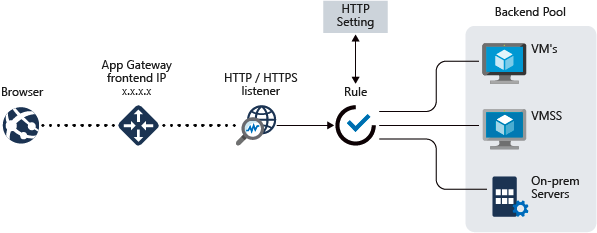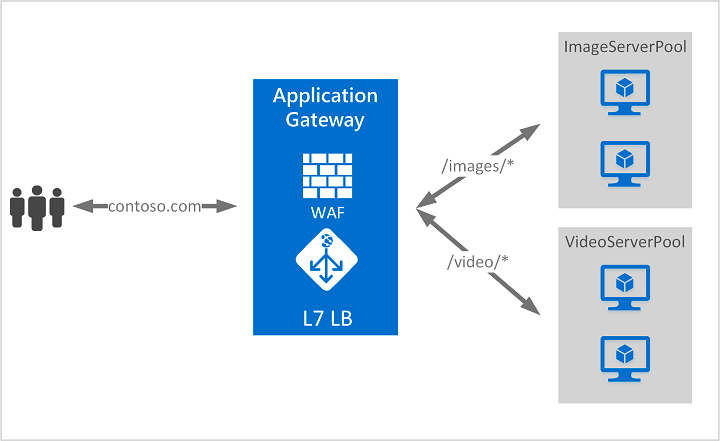Azure Application Gateway is a web traffic load balancer that enables you to manage traffic to your web applications. Traditional load balancers operate at the transport layer (OSI layer 4 - TCP and UDP) and route traffic based on source IP address and port, to a destination IP address and port.

With Application Gateway, you can make routing decisions based on more attributes of an HTTP request, such as URI path or host headers. For example, you can route traffic based on the incoming URL.
- If
/imagesis in the incoming URL, you can route traffic to a specific set of servers (known as a pool) configured for images. - If
/videois in the URL, that traffic is routed to another pool optimized for videos.

This type of routing is known as application layer (OSI layer 7) load balancing. Azure Application Gateway can do URL-based routing and more.
External reference
Setup
To set up the Azure integration and discover the Azure service, go to Azure Integration Discovery Profile and select Application Gateway.
Event support
- Supported
- Configurable in OpsRamp Azure Integration Discovery Profile.
Supported metrics
| OpsRamp Metric | Metric Display Name | Unit | Aggregation Type |
|---|---|---|---|
| azure_throughput Number of bytes per second the application gateway has served. | Throughput | BytesPerSecond | Total |
| azure_unhealthy_host_count Number of unhealthy backend hosts. | Unhealthy Host Count | Count | Average |
| azure_healthy_host_count Number of healthy backend hosts. | Healthy Host Count | Count | Average |
| azure_total_requests Count of successful requests that the application gateway has served. | Total Requests | Count | Total |
| azure_failed_requests Count of failed requests that the application gateway has served. | Failed Requests | Count | Total |
| azure_response_status HTTP response status returned by the application gateway. | Response Status | Count | Total |
| azure_current_connections Count of current connections established with the application gateway. | Current Connections | Count | Total |
| azure_capacity_units Capacity units consumed. | Current Capacity Units | Count | Average |